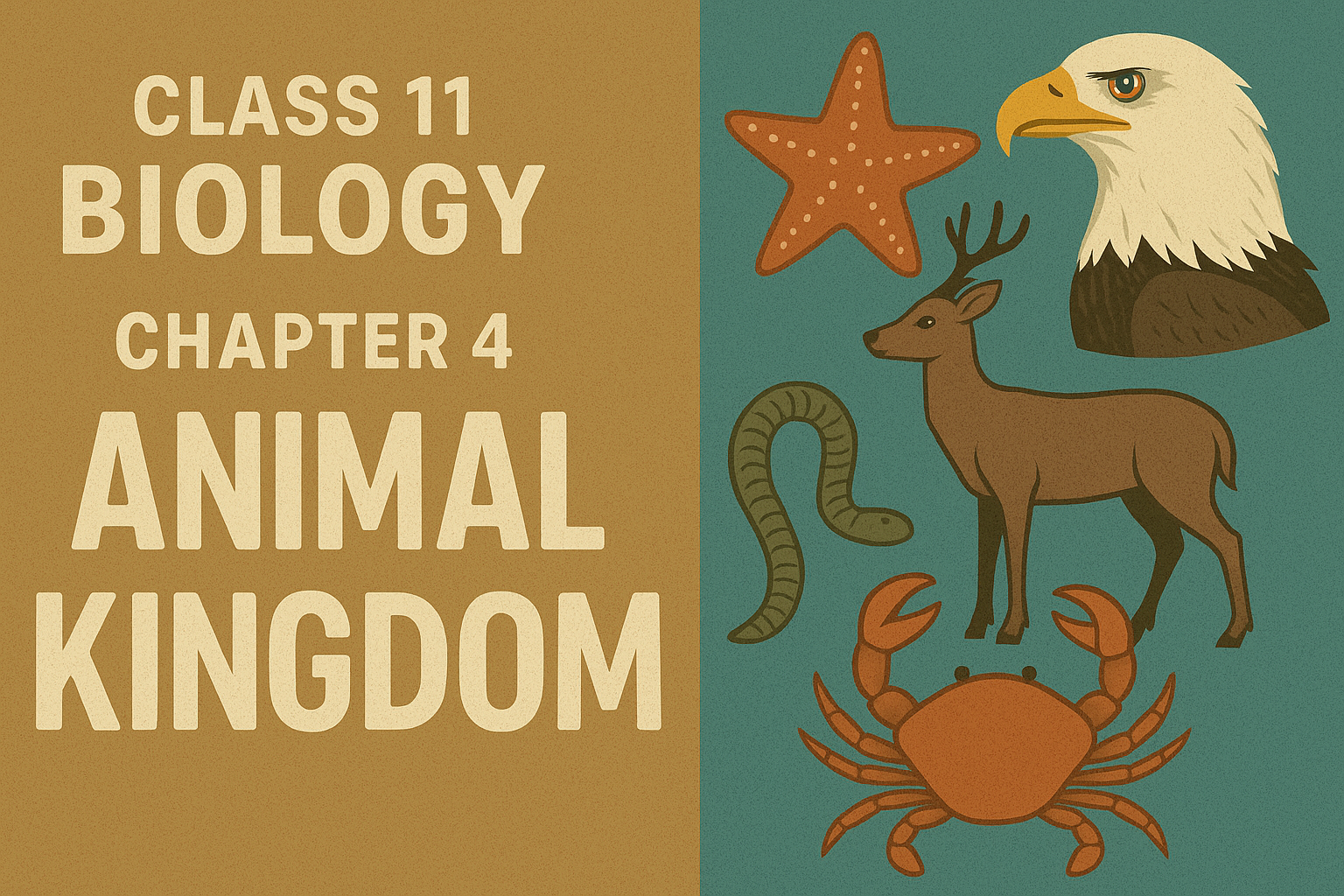










Courses

By Swati Singh
|
Updated on 4 Nov 2025, 18:26 IST
Animals are multicellular, eukaryotic, and heterotrophic organisms that depend on other living beings for nourishment. The animal kingdom is an extensive group encompassing all known animal species on Earth. To simplify their study and identification, animals are categorized into various phyla and sub-phyla according to their distinct features.
The phylum Porifera represents the most primitive group of animals. Major divisions of the animal kingdom include Arthropoda, Annelida, Mollusca, Coelenterata, and several others.

Q1. The basis of classification of animals is primarily:
Q2. Which of the following animals shows asymmetry?
Q. Diploblastic animals have:
Q. Coelom is absent in:
Q. Which of these is a pseudocoelomate?

Q. Animals with radial symmetry are mostly:
Q. Which of the following is a diploblastic animal?

JEE

NEET

Foundation JEE

Foundation NEET

CBSE
Q. Metameric segmentation is found in:
Q. Exoskeleton of arthropods is made of:
Q. Which animal shows indirect development?
Q. Which phylum includes exclusively marine animals?

Q. Which of the following is not a chordate characteristic?
Q. Flame cells are characteristic of:
Q. Nematocysts are found in:
Q. The body cavity of annelids is called:
Q. Open circulatory system occurs in:
Q. Closed circulatory system occurs in:
Q. Water vascular system is found in:
Q. Radula is a rasping organ of:
Q. Which animal lays eggs but is a mammal?
No courses found
The Animal Kingdom refers to the group of multicellular, eukaryotic, heterotrophic organisms that obtain food from other living beings. It includes all animals, from simple sponges to complex mammals.
Animals are classified into various phyla based on their body structure, symmetry, body cavity, segmentation, and level of organization. Major phyla include Porifera, Coelenterata, Platyhelminthes, Nematoda, Annelida, Arthropoda, Mollusca, Echinodermata, and Chordata.
Classification is based on body organization (cellular, tissue, or organ level), symmetry (radial or bilateral), coelom type (acoelomate, pseudocoelomate, or coelomate), segmentation, and presence or absence of notochord.
Phylum Arthropoda is the largest, including insects, crustaceans, and arachnids. It makes up more than 75% of all known animal species.
Chordates have a notochord, dorsal nerve cord, and pharyngeal gill slits at some stage of their life. Non-chordates lack these features. Examples of chordates include fish, birds, and mammals.
Vertebrates possess a backbone or vertebral column (e.g., mammals, birds, reptiles), whereas invertebrates do not (e.g., insects, mollusks, worms).
Porifera, or sponges, are considered the simplest animals because they lack true tissues and organs, and have a cellular level of organization.
Chordates show the presence of a notochord, a dorsal hollow nerve cord, a post-anal tail, and pharyngeal gill slits at some stage of their development.
The Animal Kingdom includes approximately 10 major phyla, starting from Porifera to Chordata.
Understanding the Animal Kingdom helps students learn how organisms evolve, adapt, and function, providing a foundation for advanced studies in zoology, ecology, and evolution.